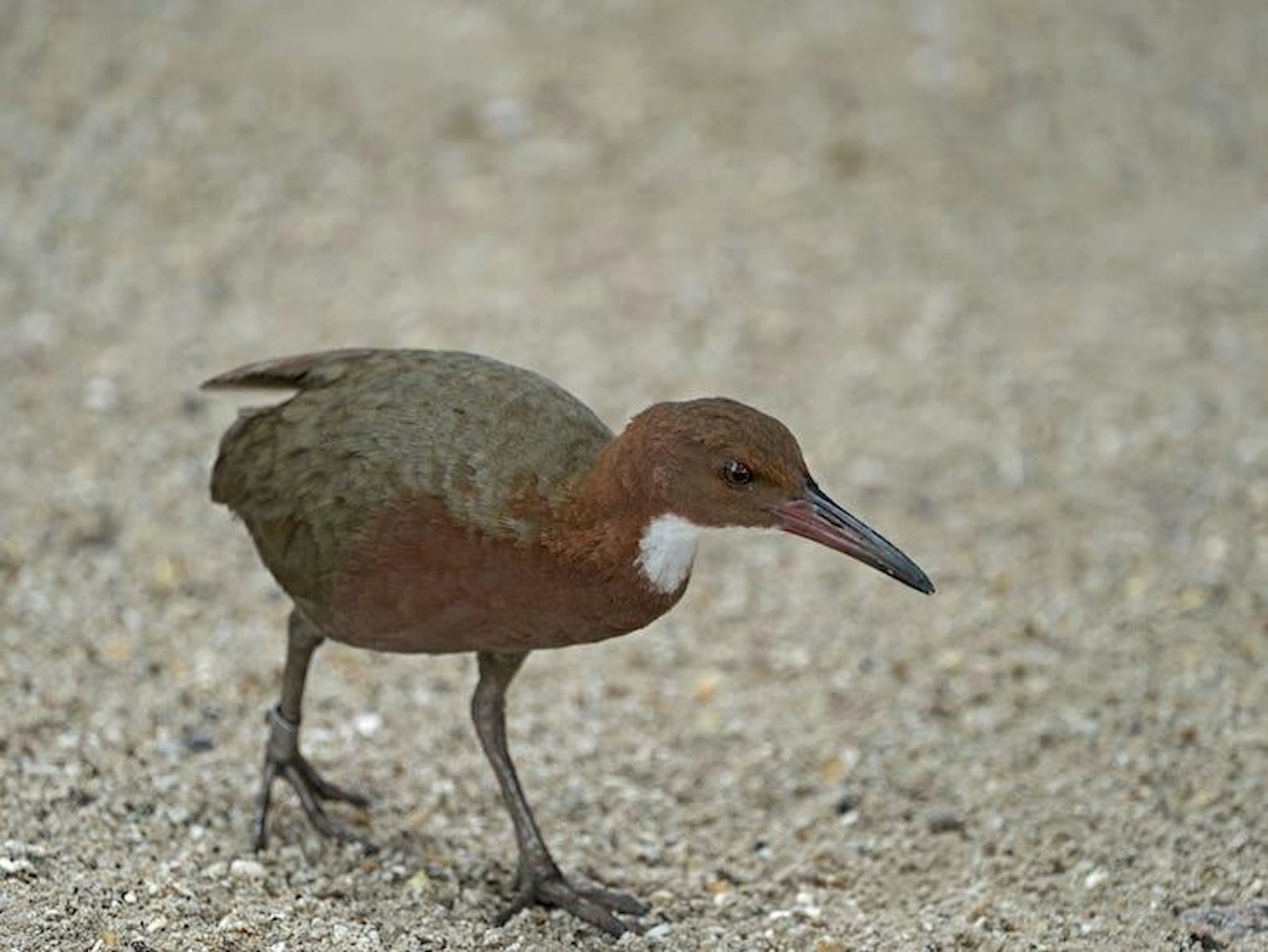
You may have heard the news of what sounds like a resurrection story on the small island of Aldabra, off the coast of Madagascar. Around 136,000 years ago, the island was submerged in water and a layer of limestone captured the rails—a species of flightless bird—living there. The birds (and all other land species living on the island) went extinct. Recently, though, scientists reported that the bones of these fossilized rails are virtually indistinguishable from rails living on the island today. They are calling this an instance of iterative evolution—where the same species evolves multiple, distinct times.
How could the same species evolve more than once? Both the fossil and modern rail are descendants of flying rails that made their way to Aldabra from the nearby mainland. In both cases, the rails adapted to the island over time. And each time, the species gradually lost its ability to fly, possibly due to a lack of predators on the island (which removes a significant selection pressure for flight). This raises an interesting question: Can birds on different branches of the evolutionary tree really be part of the same species? The answer depends on what you mean by “species.” This is the species problem, one of philosophy of biology’s persistent demons. As it turns out, it is difficult (and some would argue, impossible) to conceptualize species in a way that fully, and without exception, captures what it is that makes a group of organisms one species and not another.
This is a case of vertical convergence—possibly one of Stephen Jay Gould’s wildest dreams.
Most biologists prefer what is called the biological species concept, meaning organisms of the same species must be able to interbreed to produce viable offspring. This concept does not apply to many plants and most microorganisms, though, because they reproduce asexually. And even for sexually reproducing animals it is often difficult in practice to determine whether two groups of organisms could potentially interbreed. The Aldabra rails give a case in point since the fossil rails are, well, fossils.
The authors of the original study seem to use a different species concept to argue that the rails are a case of iterative evolution. I should point out that the authors actually call the flightless rail D. c. subsp. aldabranus—a subspecies of Dryolimnas cuvieri. But this just pushes the problem a step back—what makes them the same subspecies? We do get an answer from the authors: Their comparison between the fossil and modern rail is based on the shape and size of fossilized humerus (in the wing) and tarsometatarsus (in the leg) bones. This points to what is called the morphological species concept, which demarcates species based on morphological similarity—similarity between bodily structures.
But this conflicts with what the phylogenetic species concept—probably the second most-used of the species concepts—would tell us. In this conception, a species is the smallest group of organisms that share an ancestor and can be grouped together based on some core characteristics, like the end of a branch on a tree of life. On the phylogenetic species concept, the fossil rails and modern rails are different subspecies, since by dint of having split off from the mainland, rail species at different times, they have independent evolutionary origins. The modern rail is part of a different lineage than the fossil rail.
Part of the motivation for calling these the same subspecies based on morphology is that the bones of the fossil and modern rail are more similar in size than either is to their close ancestors—as the authors note, “Like D. c. aldabranus, it also differs considerably in size from D. c. cuvieri and D. c. abbotti.” It would probably make most evolutionary biologists that favor the phylogenetic species concept happy to say instead that these are two extremely similar subspecies. But the fact that these rails are so similar that the question of species distinction even arises is a reflection of something even more fascinating.
This reappearance is a near-perfect example of something evolutionary biologist Stephen Jay Gould imagined—a thought experiment he called “replaying life’s tape.” He wondered about the repeatability of evolution—if we rewound the universe to the origins of life, would evolution produce the same species we see today? Maybe not identical, but closely similar in form and function? Gould and other philosophers of biology pursued this question and, for the most part, acknowledge the very fine-grained contingency of evolutionary processes. They are largely skeptical of the proposal that life, if rewound, would result in the same outcome.
But this question has surfaced again as ecologists and evolutionary biologists study an evolutionary phenomenon called convergence. The fins of whales and dolphins have evolved to be structurally similar and work in much the same way, despite having independent evolutionary origins. Another example is the camera eye possessed by both humans and octopuses. These examples, like most of the studies of convergence, can be called horizontal—they involve organisms with distant evolutionary relationships who have ended up in adaptively similar environments and have, over time, evolved similar traits. But none of these cases come as close to replaying life’s tape as does that of these flightless birds. This is a case of vertical convergence—possibly one of Stephen Jay Gould’s wildest dreams.
As the authors write, “Conditions were such on Aldabra, the most important being the absence of terrestrial predators and competing mammals, that a Dryolimnas rail was able to evolve flightlessness independently on each occasion.” The tape resets when the island reemerges with much the same environmental conditions as before and the mainland rail species recolonizes. It replays to reach the same (or, if you prefer, very similar) subspecies.
Margaret E. Farrell is a PhD student in the Department of Logic and Philosophy of Science at the University of California, Irvine. Her research is focused on the history and philosophy of biology.


























